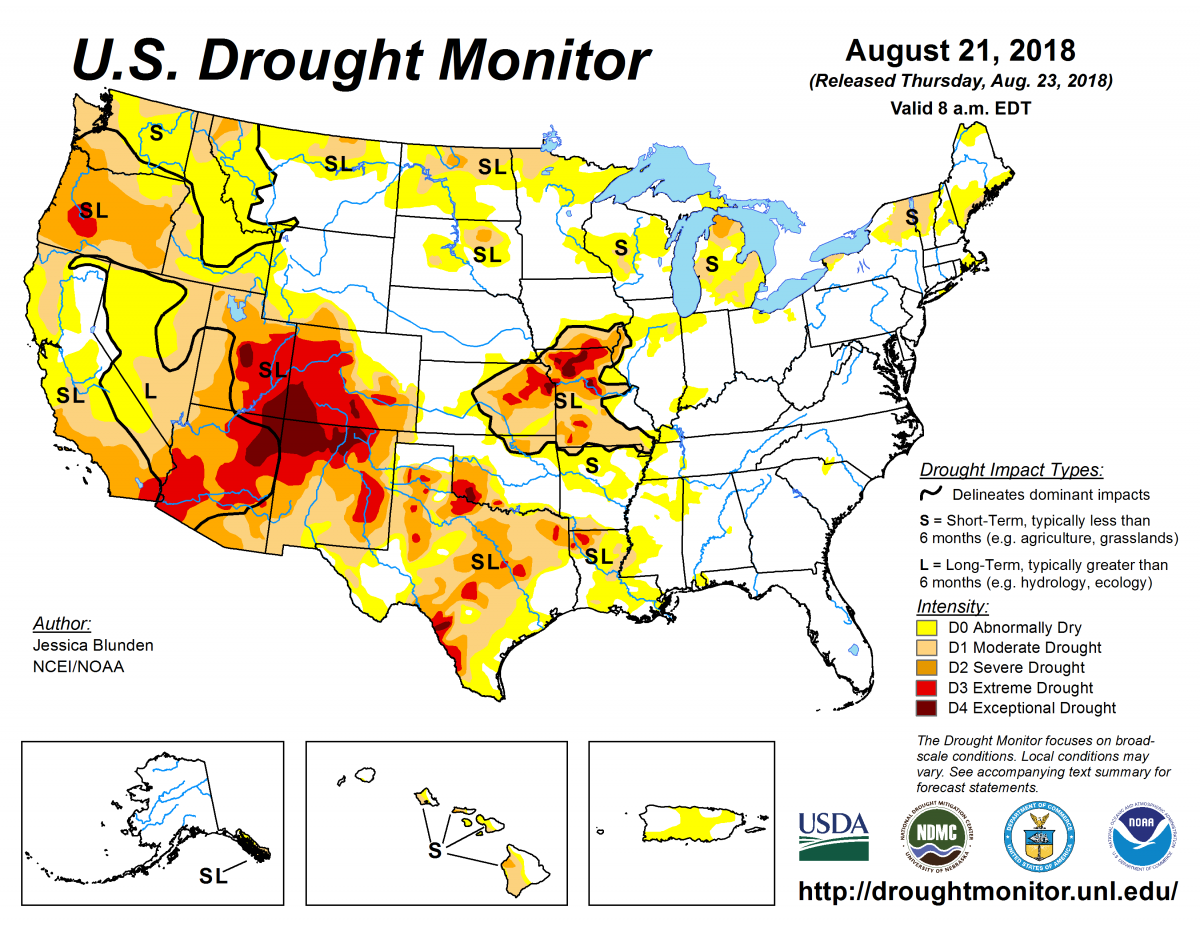
According to the August 21, 2018, U.S. Drought Monitor, moderate to exceptional drought covers 29.8% of the United States, a decrease from last week’s 30.7%. Extreme and exceptional drought—the worst categories—also contracted to cover 6.3% of the nation, down from 6.8% last week.
The upper-level circulation pattern during this U.S. Drought Monitor week consisted of a strong westerly flow across southern Canada, and subtropical high pressure across the southern contiguous United States, with troughs and closed low pressure weather systems moving in the flow in between. Some of the closed lows slowed or stalled out over the central Lower 48. These systems pulled cooler Canadian air behind cold fronts into the central U.S. and drew in Gulf of Mexico moisture ahead of them.
The fronts and lows provided a strong lifting mechanism that wrung out the moisture in heavy storms across the central to northern Plains and Midwest, where precipitation was above normal for the week. The above-normal precipitation stretched westward into the High Plains, where the weather systems entered the region, and east and southward as the fronts moved slowly toward the coast.
High pressure ridging kept much of the West warmer and drier than normal, and the subtropical high in the South brought warmer- and drier-than-normal weather to most of Texas, while the rain and cold fronts kept temperatures cooler than normal across the northern to central Plains. A southerly flow ahead of the low pressure systems brought warmer-than-normal temperatures to the Great Lakes to Northeast.
This weather pattern contracted drought and abnormal dryness across parts of the southern and central Plains to Midwest, as well as parts of the Northeast, but expanded drought and abnormal dryness in southern to eastern Texas, across parts of the far northern Plains and Great Lakes, and in parts of the Midwest missed by the rain.
Abnormal dryness and drought are currently affecting over 131 million people across the United States—about 42.3% of the country’s population.

The full U.S. Drought Monitor weekly update is available from Drought.gov.
In addition to Drought.gov, you can find further information on the current drought as well as on this week’s Drought Monitor update at the National Drought Mitigation Center.
The most recent U.S. Drought Outlook is available from NOAA’s Climate Prediction Center and the U.S. Department of Agriculture provides information about the drought’s influence on crops and livestock.
For additional drought information, follow #DroughtMonitor on Facebook and Twitter.



